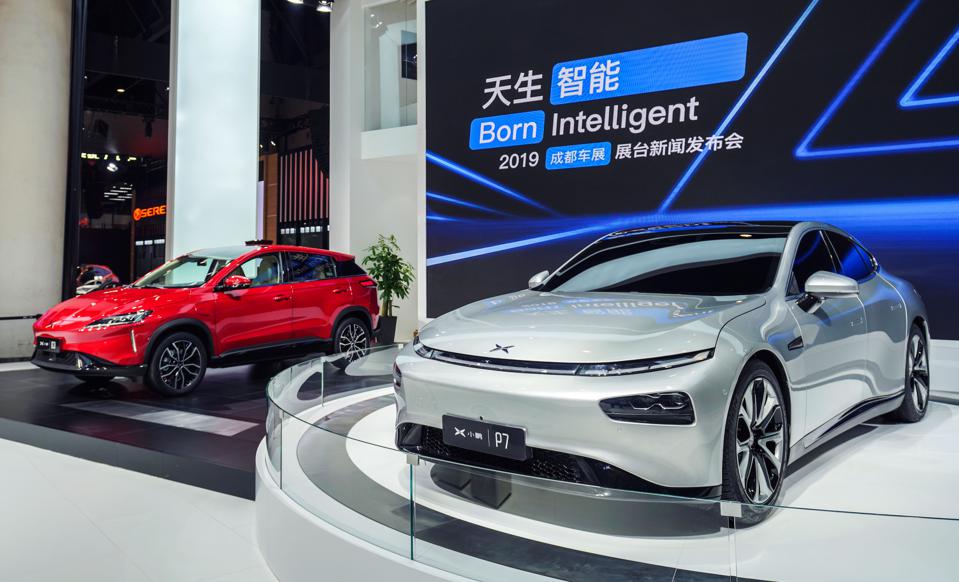Read The Full Article On:Wccftech
Xpeng Motors (NYSE:XPEV 44.73 33.40%), a Chinese EV manufacturer that also goes by the name Xiaopeng Motors, has largely flown under the radar of investors ever since the stock debuted on the New York Stock Exchange back in August 2020. However, the recent rally in Xpeng shares has become an impetus for wider recognition, marking the stock as an attractive alternative to its much larger counterpart, NIO (NYSE:NIO 48.3 12.12%). In this post, we will attempt to explain why an entry at current price levels is very risky.
Bear in mind that investors have been betting on meteoric growth in China’s EV sector in the years to come. It is for this reason that NIO and other major Chinese EV players – including Xpeng and Kandi – have been performing so well in the stock market. The following infographic illustrates this phenomenon in detail:

As a refresher, Xpeng currently retails two EV models – the G3 SUV and the P7 sedan. The G3 offers a maximum range of 520 km, a fast DC charging time of 30 minutes to recharge the battery from 30 percent to 80 percent level, 0 – 100 km/h acceleration in 8.6 seconds, and a maximum speed of 170 km/h. For its part, the P7 offers a maximum range of 706 km (with an extra range pack), a charging time of 670 km, a fast DC charging time of 31 minutes to recharge the battery from 30 percent to 80 percent level, and a maximum speed of 170 km/h. Readers can view the detailed specs of each car here and here. The G3 starts retailing at 146,800 Yuan ($22,200), while the P7 can be purchased by customers at a minimum price of 229,900 Yuan ($35,000).
Xpeng’s current production levels are certainly modest when compared with NIO’s. As an illustration, Xpeng is expected to produce only 22,000 units in 2020. NIO, on the other hand, has already delivered 31,430 EVs, as of October 2020. Nonetheless, Xpeng is working to ramp up its production significantly. As per a recent investment note by Credit Suisse’s Bin Wang, the company will produce 60,000 units in 2021 and 135,000 units in 2022:
“Due to relatively smaller volume initially, we assume XPeng will stay loss-making in 2020-22E with negative free cash flow—Rmb8.3 bn total negative FCF in these three years.”
The analyst then went on to note:
“Starting at a volume of 22k units in 2020, we forecast XPeng will deliver 60k/135k units in 2021/2022. We estimate XPeng’s total per unit cost (COGS+SG&A+R&D) to reduce from Rmb372k in 2020 to RMB209k in 2023, when the company achieves 210k unit volume and first year positive bottom line and free cash flow.”
For comparison, NIO is working to increase its annual production capacity to 300,000 unitsby the end of 2021. Moreover, NIO is also looking to expand into key geographical regions, with Europe standing at the top of the list of possible contenders. Xpeng, for the time being, is focused only on the Chinese market. Obviously, in light of these facts, NIO appears to be a much more attractive investment.
Let’s now take a look at the two stocks from a fundamental analysis point of view. NIO has registered year-to-date gains of over 1,000 percent! Xpeng though has generated gains of around 84 percent relative to its current low of $17.11 per share. Despite these relatively modest gains, Xpeng’s fundamentals appear much more stretched compared with its larger peer. The chart below, sourced from Koyfin, illustrates the trailing 12-month Price-to-Sales(P/S) ratio for the two companies. It should be noted though that this data is limited for Xpeng as it went public only in August.

As is evident from the chart above, Xpeng is currently trading at a P/S ratio that is almost double that of NIO. A comparative analysis of the Enterprise Value-to-Sales metric also yields a similar picture.

Using next 12-month (NTM) timeframe also yields a similar result:

Of course, the purpose of this article is not to discourage investment in Xpeng. For all intents and purposes, the stock remains a promising EV play. In fact, just today, Bank of America (NYSE:BAC 26.69 -2.38%) published a bullish outlook for Xpeng, raising the stock price target to $36.20 while noting:
“We raise our 2022E volume sales by 5% mainly to reflect stronger confidence in XPeng’s continuous model launch and volume growth in 2022. We believe its effort in improving electric vehicle performance and enhancing user experience on connectivity and also autonomous driving on the Xmart OS and XPILOT should help improve its brand image.”
Our purpose here is to highlight the current lofty valuation of the stock. Investors may be able to generate a better return on their investment if they wait for a substantial dip before jumping headlong into this stock play.

